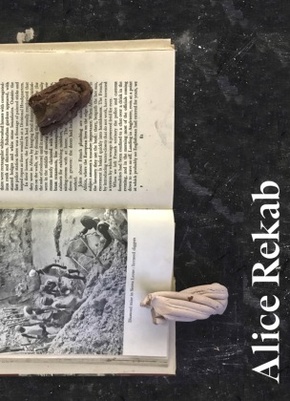| Verlag | Distanz Verlag |
| Auflage | 2023 |
| Seiten | 192 |
| Format | 17,2 x 1,5 x 23,7 cm |
| Gewicht | 494 g |
| ISBN-10 | 3954765527 |
| ISBN-13 | 9783954765522 |
| Bestell-Nr | 95476552A |
Wie sind wir zugehorig?
Alice Rekab (geb. 1987 in Dublin, lebt und arbeitet ebenda) erforscht jene kulturellen und personlichen Geschichten, die wir über uns erzahlt bekommen, und jene, die wir selbst erzahlen. Die eigene irisch-sierra-leonische Identitat bildet den Ausgangspunkt für das Nachdenken über Familiengeschichten, Erfahrungen des Erwachsenwerdens und Lebenswirklichkeiten. Durch einen kollaborativen und interdisziplinaren Ansatz produziert Rekab Werke, die in den Bereichen Film, Performance, Bild und Skulptur angesiedelt sind, und schafft neue Erzahlungen, die durch die Prismen von Korper, Familie und Nation Fragen zu Herkunft und Biografie auffachern.
Im Rahmen der Ausstellung im Museum Villa Stuck in der Reihe RICOCHET erscheint Rekabs erstes monografisches Künstler_innenbuch mit eigens für das Buch erstellten Collagen. Die Publikation gibt einen indexikalischen Uberblick über die Herkünfte und Vitae der Objekte, die Rekab verwendet, und ist angereich ert mit Essays von Cairo Clarke, Anne-Franc oise Schmid und Isabelle Sully sowie einem Gesprach zwischen Alice Rekab und Kuratorin Sabine Schmid.
How Do We Belong?
Alice Rekab (b. Dublin, 1987; lives and works in Dublin) studies the cultural and personal stories that are told about us as well as the ones we ourselves tell. Their own Irish-Sierra-Leonean identity anchors their reflections on family histories, the experiences of coming of age, and realities of life. A collaborative and interdisciplinary approach lets Rekab produce works spanning the domains of film, performance, image, and sculpture and create new narratives that employ the prisms of body, family, and nation to unfold questions of origin and biography.
To be published in conjunction with their exhibition at Museum Villa Stuck as part of the RICOCHET series, Rekab's first monographic artist book features collages created especially for the occasion and an indexical overview of the origi ns and lives of the objects they uses. It is rounded out by essays by Cairo Clarke, Anne-Franc oise Schmid, and Isabelle Sully and a conversation between Alice Rekab and curator Sabine Schmid.

